North America’s weasel populations may be in serious decline. Your observations and photographs can help researchers and conservationists.
Three species of weasels – long-tailed, short-tailed and least – are secretive, small carnivores that range widely in North America. For those of us who grew up in rural areas, we often heard stories of weasels raiding chicken coops or being spotted hunting mice in grain bins. This led to the perception that weasels are common if seldom-seen mammals – a perception that holds to this day.
They are out of sight, out of mind. In many states, they are still unprotected wildlife, essentially viewed as vermin. But there are alarming signs that weasel populations may be facing challenges.
A new paper in the journal PLOS ONE finds that weasels are likely in decline and the long-tailed weasel may have disappeared from large parts of its range. The study also points to a need to better track weasels, so that wildlife managers and conservationists could understand the weasels’ disappearance.
“The authors of this paper are active field biologists, and we noticed that we just don’t see weasels in our data after field work,” says coauthor Roland Kays, research professor of forestry and environmental resources at North Carolina State and head of the N.C. Museum of Natural Sciences’ Biodiversity Lab. “We thought that this could actually be a real problem.”
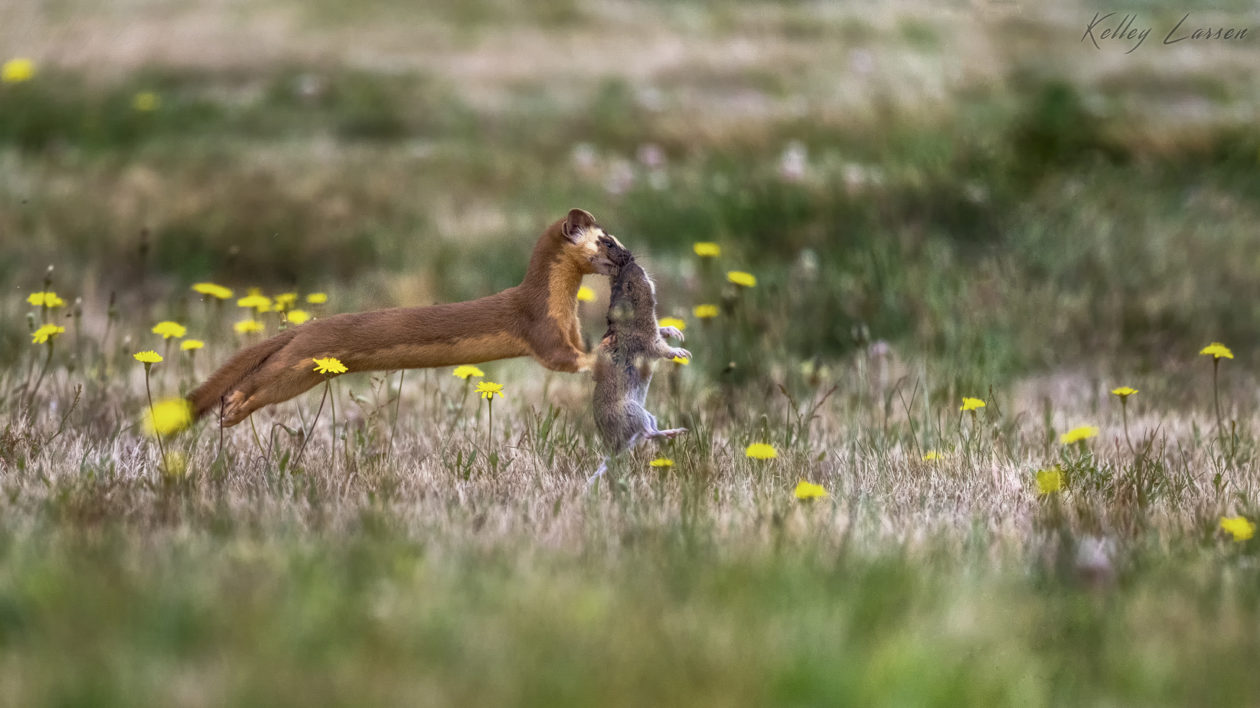
Where are the Weasels?
The study looked at harvest data from fur trappers, data from museum collections and iNaturalist, and photos from the Snapshot USA, a national camera trap survey.
Fur trapping for weasels remains legal throughout much of their range, and states keep data on catches going back decades. “The most striking thing is how many weasels fur trappers used to trap,” says Kays. “That’s dropped by orders of magnitude.”
That in no small part is due to fewer people trapping and less trapper effort aimed at weasels, but the study still showed an alarming decline.
For museum data and other observations, there are areas with frequent long-tailed weasel sightings before 2000, but few or none after 2000. “The animals have potentially disappeared from large parts of their range,” says Kays.
In a press release, he noted the overall trend shown by their analysis: “It’s hard to say anything conclusive other than these data sets are all are painting the same picture.”
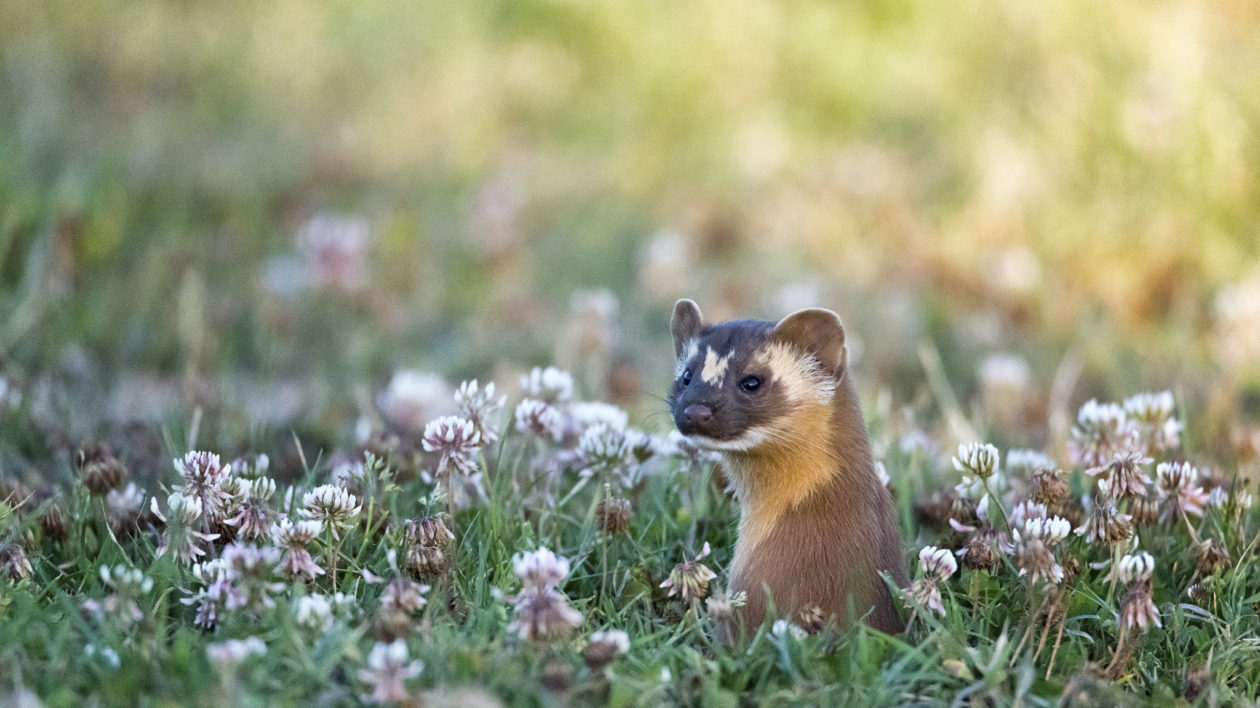
Kays is quick to point out that this is an initial attempt to understand weasel population trends, but more work is needed. He hopes it can help bring attention to small carnivores, often overlooked in global conservation.
Large carnivores are frequently studied and even most casual nature lovers know of the challenges facing tigers and cheetahs. But small carnivores are often poorly understood and overlooked, despite a growing body of evidence that suggests they face similar challenges. Another recent paper in the journal Biological Conservation shows a global trend of small carnivore decline.
Compare the conservation attention to polar bears and least weasels. Polar bears are the largest carnivore, and are featured in nature documentaries, mainstream news coverage and conservation publications. They’re instantly recognizable even though most of us will never see one in the wild.
The least weasel is the smallest carnivore on the planet. Most don’t even know it exists, even though it may be in your local woods.
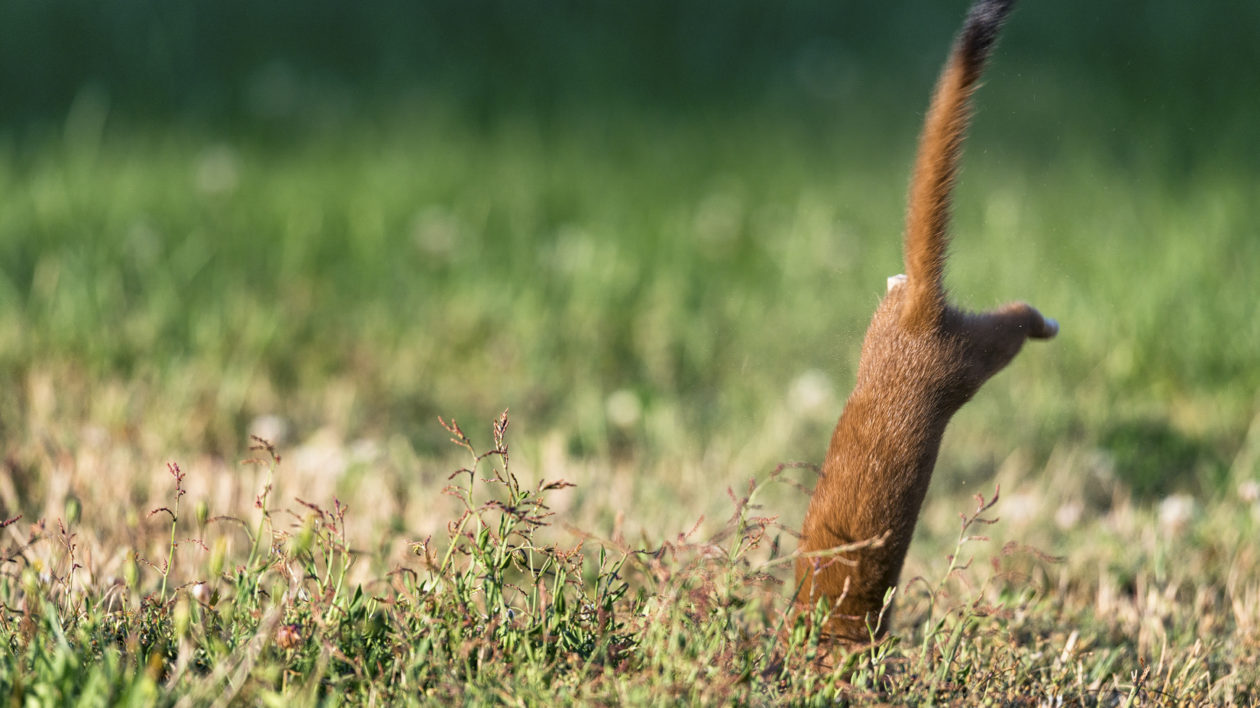
What’s Happening?
Kays points to the need for more science before drawing any conclusions on why weasels may be declining.
Despite the fact that weasels can still be trapped, he says that overharvest is not likely to be a major factor in the decline. With weasels disappearing across southern parts of their range, climate change appears to be a significant factor.
Changing agricultural practices and the use of rodenticides could also play a role. Rodenticides leave sick or dead mice and rats around, passing on the poisons to predators like weasels. The impact of rodenticides on other predators including raptors and bobcats has been traced in studies in California and elsewhere.
Changes in forests and predator communities have also been identified as a potential cause of decline. Owls and hawks have increased in population, so they could be preying on weasels. Abundant white-tailed deer populations have eliminated the understory of eastern forests, which could make weasels easier prey.
“There’s no smoking gun,” says Kays. “It could be a combination of factors.”
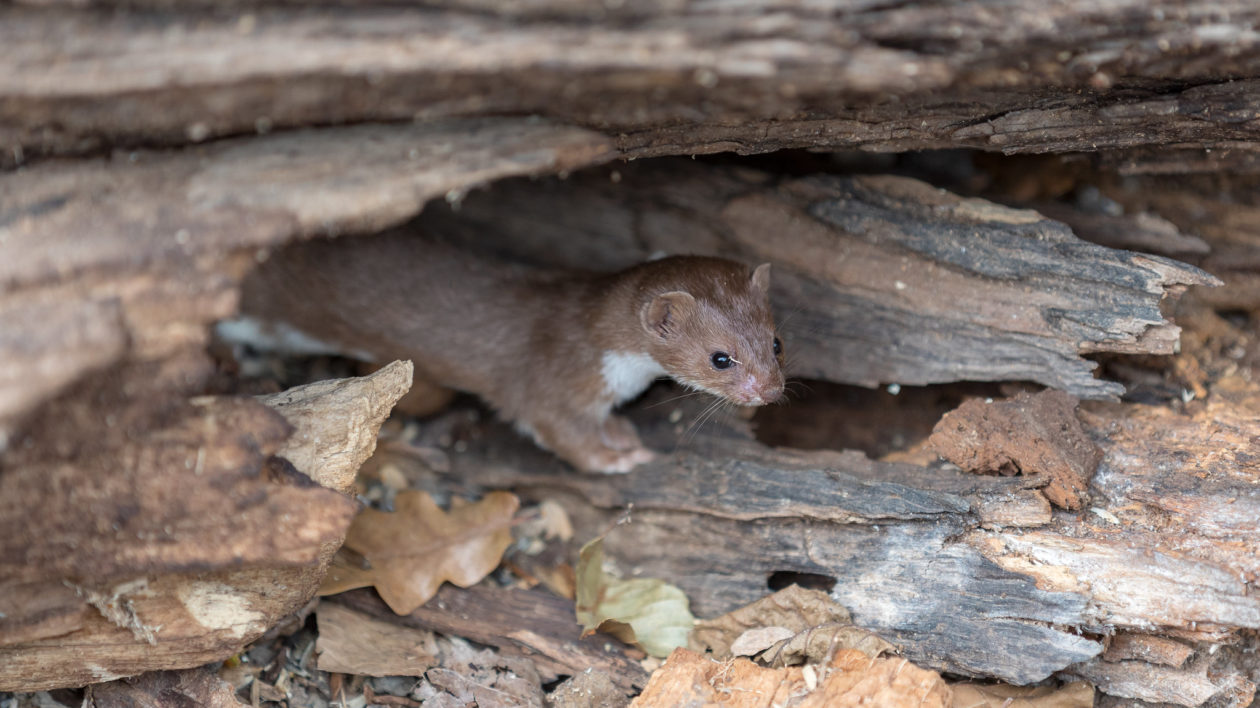
You Can Help
Kays says there’s a need to better track weasels, so that researchers can understand what’s happening. That includes designing camera trap sets specifically for weasels. With their small body size and quick movements, weasels captured by conventional trail camera sets may not reveal the species. Kays says that a baited box with a camera in it has proven effective in Europe, and gets the weasel right in front of the trap.
“We need to find the right set and the right baits and lures and get dialed in specifically for weasels,” he says. “That’s a real priority.”
There’s also a role for you. Citizen science data is a tremendous help, and has already tracked likely declines and disappearances. For mammal watchers, backyard nature lovers and trail-camera enthusiasts alike, a weasel is a special sighting.
But that sighting should be more than a memory. Share your photo on iNaturalist, where researchers can access it. And if you’re a photographer, make sure to get a photo of the tail: that is a key diagnostic in distinguishing the species.
“We are really trying to put weasels on the radar,” says Kays. “If you take a photo of a weasel, we would love to see it. Small carnivores are important species in their ecosystems. There are still a lot of weasels in North America. But now is the time to get a better idea what’s happening, so that we can address the situation before it becomes critical.”
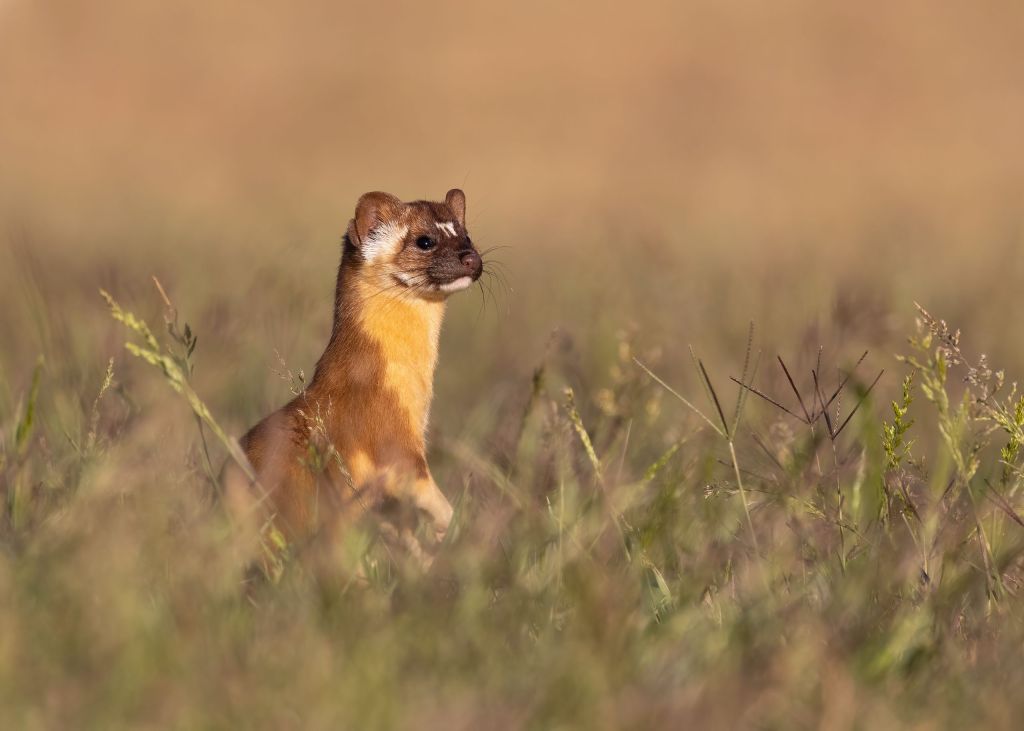



I had just finished flipping our bog bridges this afternoon at TNC’s Dundery Brook trail in Little Compton RI when a short tailed weasel hopped out to inspect. Alas, too fast for my camera. I see them here regularly, wonderfully agile and curious creatures they are.
I saw two a few weeks ago.
I saw a long tailed weasel in Santa Cruz on June 4th 2023, just south of the lighthouse on a set of concrete stairs down to the water. He kept coming back to observe us. After about ten minutes of briefly watching us he ran into the ice plant and came back with a rat nearly his own size and lept into his rocky tunnel.
Jonathan
Weasel sited at Davenport Landing Beach July 2nd 2022. Very active & cute on wood fence.
Saw what seemed to be a long tail
Across the street running up and down neighbors fence line. I live on a quiet dirt road in Bolinas Ca. Marin Co. I have never seen one in my small rural town before. ?
I and my husband , we were walking with our dog, around lake Lawrence Youngman, Elkhorn, NE, and we saw a brown chocolate long tail weasel. Jumping around rocks that are around the lake. Tomorrow we will try take some pictures to send to you.
Incredible! one just ran through my backyard 12 pm bright Sunday light. Zip 93420
Saw a long-tailed weasel on my patio in Laguna Niguel, California, this morning, 6/10/2022. Unfortunately I only got a short, not very good video which I will try and upload to iNaturalist.
June 2,2022 I smarter spotted a small in my yard we have an acre and a quarter out here in Riverside Lakeview and it came bouncing across the yard and I was surprised I didn’t have time to take a picture but I looked it up here and it was a small weasel I’ll be I’ll be watching out for it
I saw a long tailed weasel in the community of Trilogy In Nipomo. CA 5/25/2022. It was investigating the entry of a model home by Shea builders.
I just saw what I think was a weasel at Dover Bay, ID, near the marsh. It was small but was gray with white stripes and it came out from under a boulder and grabbed what looked like a dead rodent, then disappeared under another boulder with its dinner. I searched the internet and couldn’t see the photo of what I saw so I’m wondering if it was going from winter white to its spring/summer color? It was very small and moved so fast I couldn’t see its tail. Then I saw a snapping turtle sunning itself. Have seen a beaver swimming in this past fall as well. We have bald eagles living here as well. A nature lover’s paradise!
Weasel = Ermine (in winter garb) appears whenever our birdseed fed rat population gets too big. We’ve had this occur 3X in the past 20 years. Now we’re down to just one rat, so we don’t expect to see “our” ermine this winter. 🙁
Tod & Mary Young
Granite, Utah
Last summer, as I was sitting on my back steps, a little critter hopped up into a planter no more than arm’s length away. Imagine my delight when it made itself fully visible and it was a weasel! Such a cute little thing, with round ears and bright eyes. It stayed with me for about 15 minutes, and then moved on. I just had to learn more, and was very pleasantly surprised to learn that they prey almost exclusively on mice, and very saddened to learn that they are trapped. We live in the country, so mice are very common. I’ve lived in this house for 30 years, and it’s the only weasel I’ve ever seen here. I keep hoping to see another one (or more)!
Thanks for your article Matt! I saw a long-tailed weasel in Peabody, Massachusetts, on September 11, 2021, and just posted my observation to iNaturalist. I observed an adult weasel moving slowly (for a weasel) from a garden bed across a path, and into wood shed at 3:00 PM. Able to see entire adult animal, from head to long-tail, before moving out of view into wood shed.
All predation is important. That’s one reason I drew a weasel for the contents page of my SKI TRAILS AND WILDLIFE book.